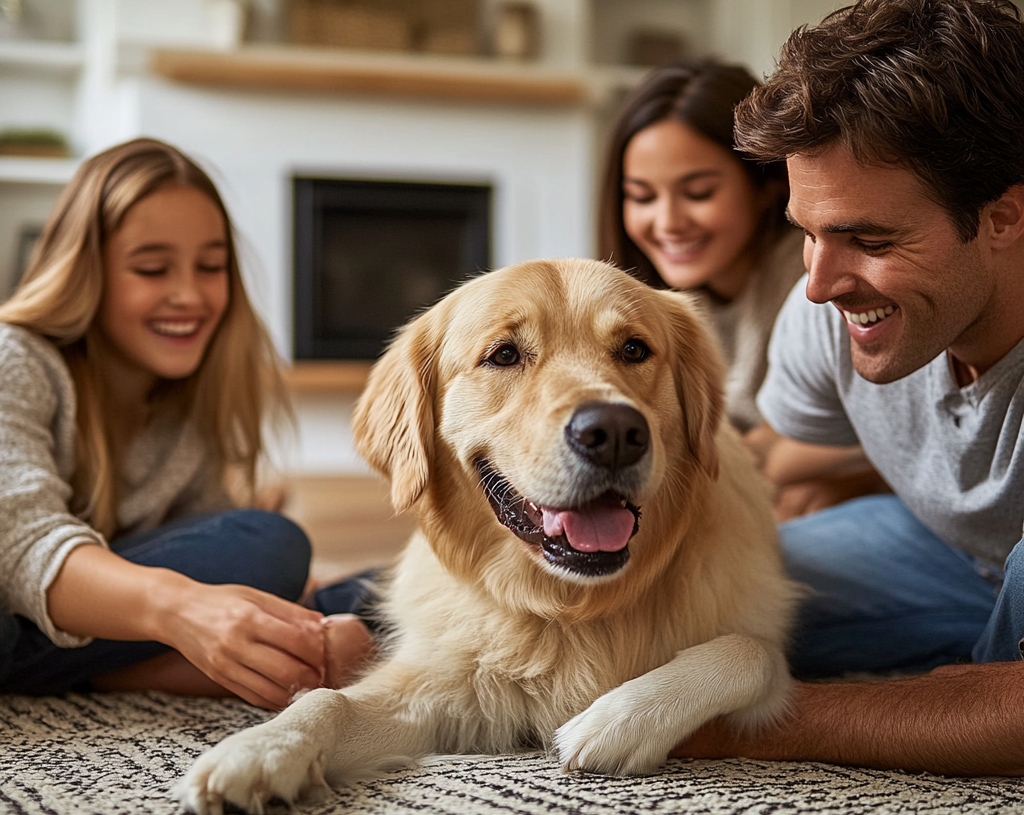Introducing a dog to your family can be an exciting yet challenging experience. Discover 7 simple tips for a smooth introduction that ensures your new furry friend feels at home.
7 Simple Tips for Introducing a Dog To Your Family
Introducing a dog to your family can be an incredibly rewarding experience. However, it’s important to approach it with care and preparation. A smooth transition not only makes your new dog feel comfortable but also ensures harmony within your household. In this guide, we will walk you through 7 simple tips for introducing a dog to your family, providing a stress-free environment for both your pet and your loved ones.

Table of Contents
- Prepare Your Home Before the Dog Arrives
- Create a Safe Space for Your Dog
- Start Slowly with Family Members
- Introduce the Dog to Other Pets
- Establish a Routine Early On
- Monitor Behavior and Offer Positive Reinforcement
- Be Patient and Allow Time for Adjustment
1. Prepare Your Home Before the Dog Arrives
The first step in introducing a dog to your family is ensuring that your home is ready. Before bringing your new pet inside, make sure you have all the necessary supplies: a bed, food and water bowls, toys, and a designated area for your dog. Additionally, check that your living space is dog-friendly—this may include securing any hazards or inaccessible areas.
Creating a dog-proof environment will help prevent unnecessary stress for both you and your new dog. A clean and organized space will also show your dog that it’s a welcoming environment.
2. Create a Safe Space for Your Dog
When introducing a dog to your family, it’s important to give them their own safe, quiet space. This is especially crucial in the early days when your dog may feel overwhelmed by the new environment. A crate or a cozy corner where they can retreat will help them feel secure. Make sure family members understand the importance of giving the dog some alone time in their space to avoid overwhelming them.
Creating a calm and secure space will also help your dog adjust faster to their new family.
3. Start Slowly with Family Members
When introducing a dog to your family, the process should be gradual. Let your dog meet each family member one at a time, allowing them to approach at their own pace. This will help reduce the chance of overwhelming your dog, which can lead to anxiety or behavioral issues.
Avoid forcing interactions, as this could create negative associations with certain people. Instead, let the dog come to family members when they feel comfortable. Each introduction should be gentle and calm, allowing the dog to build trust and feel safe.
4. Introduce the Dog to Other Pets
Introducing a dog to your family is not just about people. If you already have other pets, it’s crucial to introduce them slowly as well. Begin by allowing them to meet in a neutral space, ideally outside your home. This reduces territorial behavior and lets them adjust to each other without feeling threatened.
Supervise all interactions between your new dog and other pets. Keep them on leashes during the first few meetings, and offer praise when the pets behave calmly toward each other. Over time, the relationship will evolve as they become familiar with one another.
5. Establish a Routine Early On
Dogs thrive on routine. By establishing a consistent daily routine, you help your new pet feel more secure in their new home. This includes regular feeding times, bathroom breaks, play sessions, and sleep schedules.
A predictable routine helps to reduce stress for the dog, as they learn what to expect each day. It also allows family members to bond with the dog while reinforcing good behavior. Set clear boundaries and stick to them to create a balanced and well-behaved dog.
6. Monitor Behavior and Offer Positive Reinforcement
When introducing a dog to your family, always monitor their behavior. Dogs will often communicate through body language, and it’s important to recognize signs of stress, fear, or aggression. Be attentive and responsive to your dog’s needs, and step in if things seem to be escalating.
Positive reinforcement plays a critical role in reinforcing good behavior. Reward your dog with treats or praise when they behave well or follow commands. This encourages your dog to continue making positive associations with family members and their new environment.
7. Be Patient and Allow Time for Adjustment
It’s important to be patient when introducing a dog to your family. Every dog adjusts at their own pace, and some may need more time than others to feel comfortable in their new surroundings. Avoid rushing the process or expecting immediate results. Give your dog the time they need to adjust, and allow them to feel secure in their new home.
With patience, consistency, and understanding, your dog will gradually become an integral part of your family.
Conclusion
Introducing a dog to your family is a big step, but by following these 7 simple tips, you can create a smooth and stress-free transition for both your new pet and your household. From preparing your home to fostering patience during the adjustment period, these tips ensure that your dog will feel at home in no time.
Remember, every dog is unique, so take the time to observe their needs and adapt the process as needed. With love, consistency, and understanding, your dog will thrive in their new home.
For more pets-related articles, click here https://ledstk.com/category/pets/, and for recipe lovers, see here sotastyrecipe.com.
